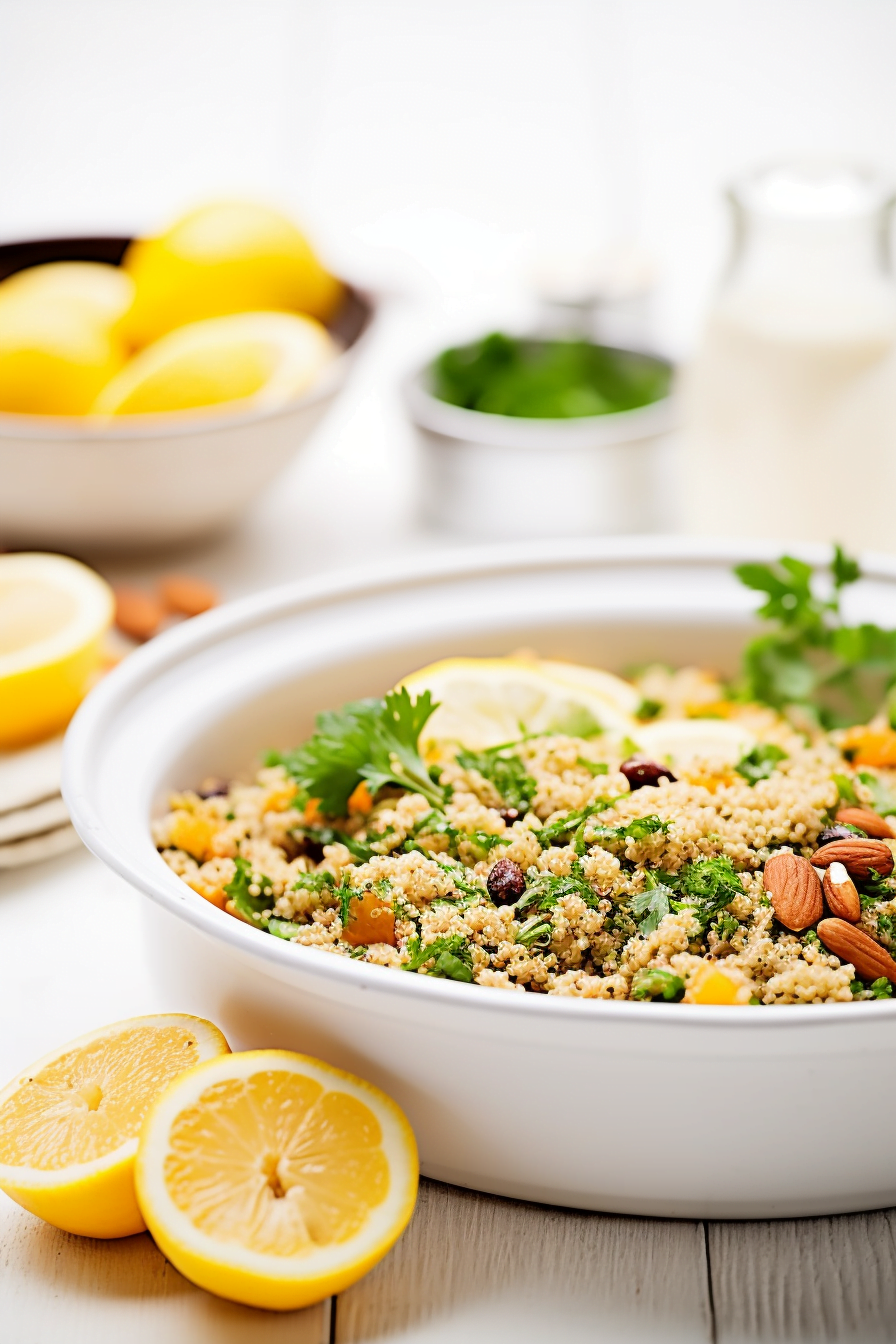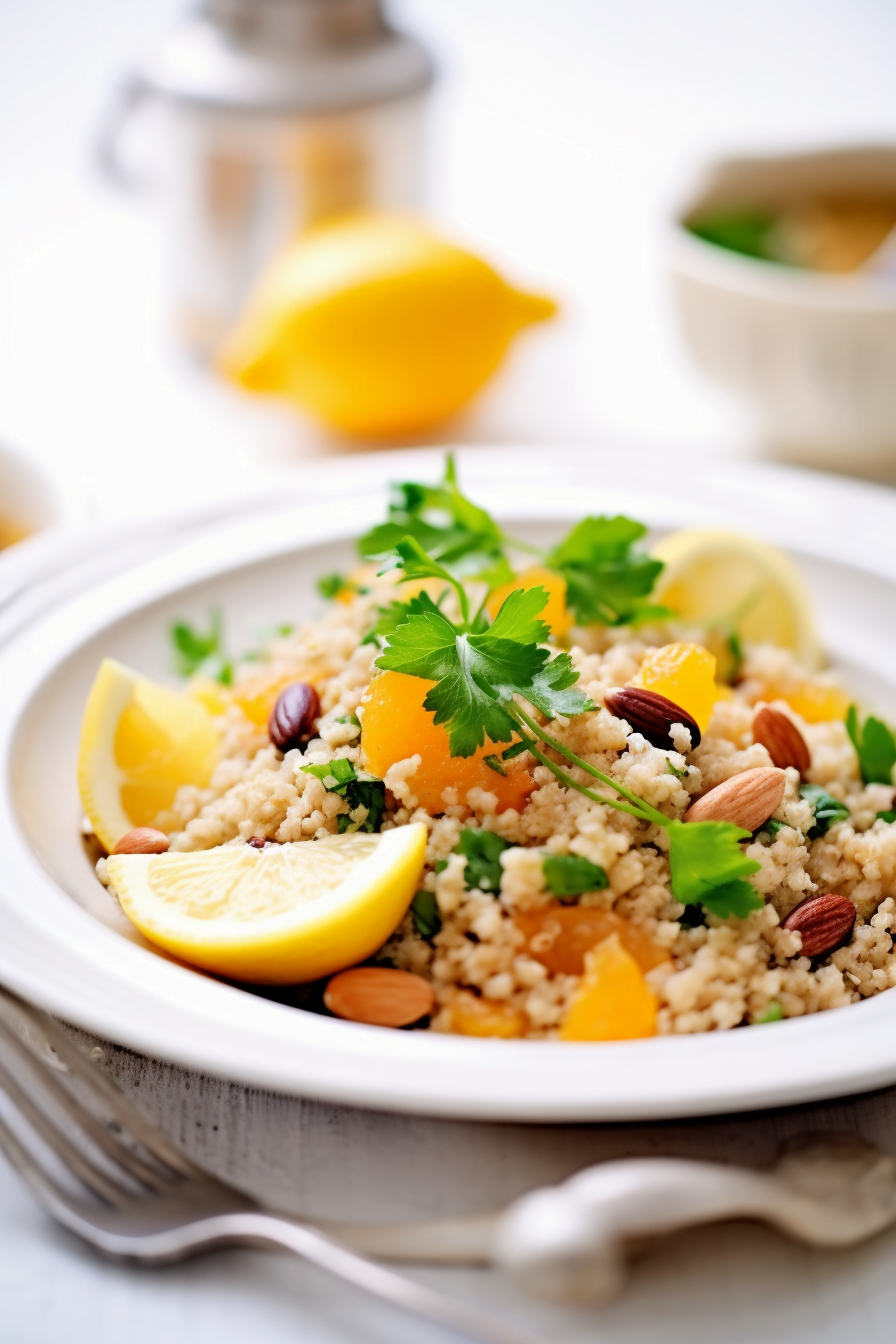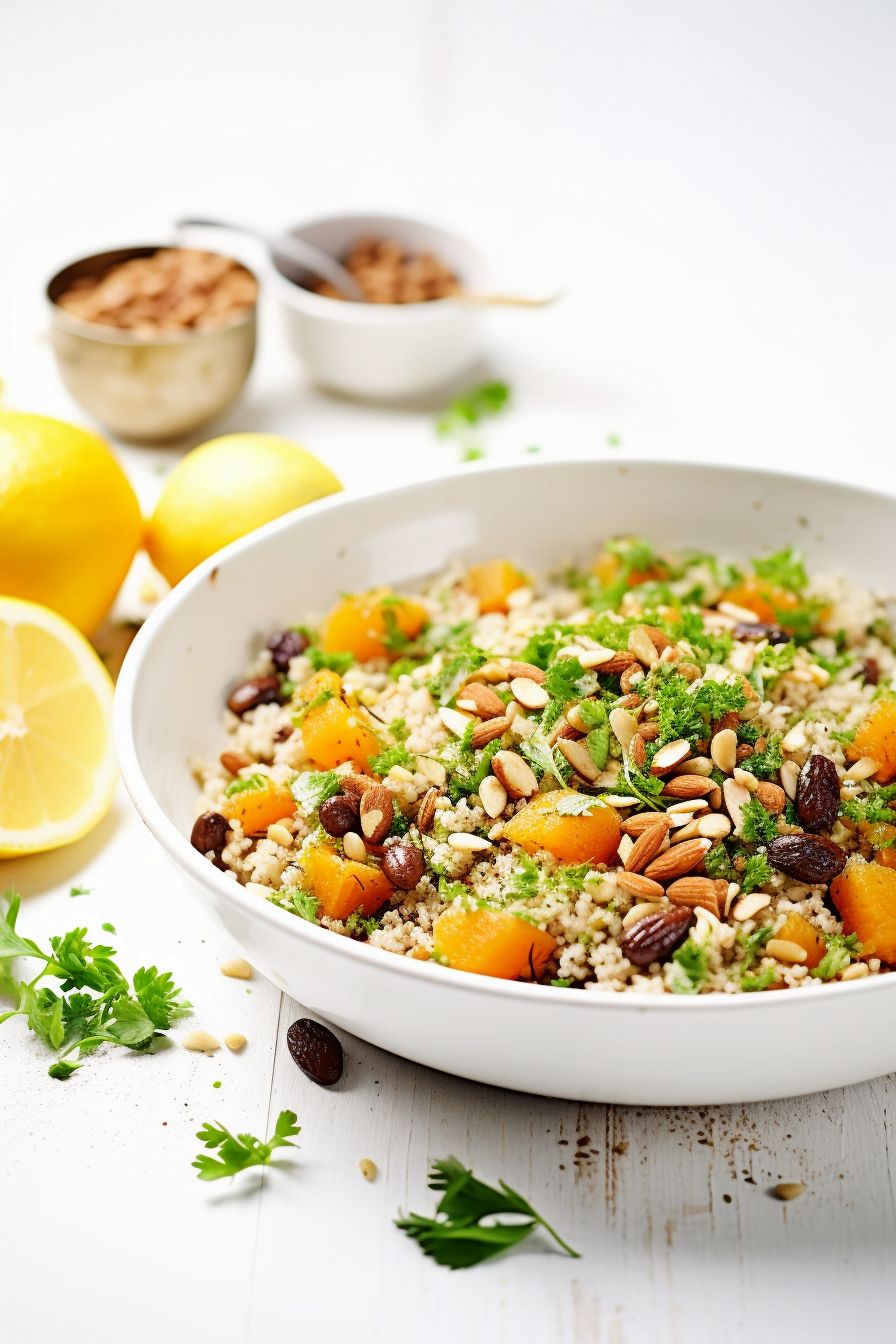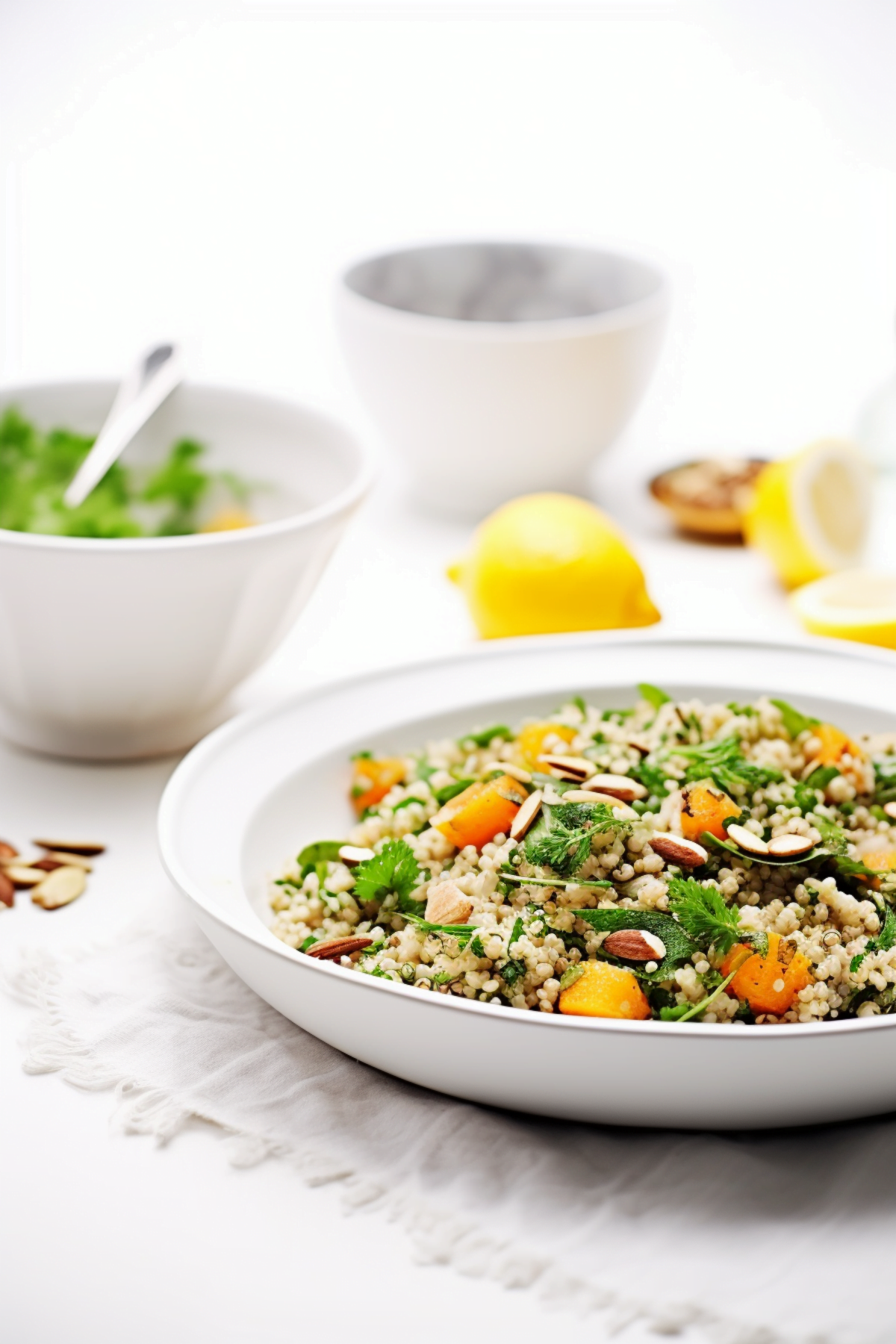Discover the Delights of Syrian Bulgur Pilaf with Apricots and Almonds
Embark on a culinary journey to the heart of the Middle East with a dish that’s as nourishing as it is flavorful. Syrian Bulgur Pilaf with Apricots and Almonds is a vibrant medley of textures and tastes, effortlessly combining the nutty essence of bulgur wheat with the natural sweetness of apricots and the satisfying crunch of almonds. Whether you’re seeking a sumptuous side or a hearty vegetarian main course, this recipe promises to elevate your dining experience.
Perfect for family dinners or special occasions, this dish not only tantalizes the taste buds but also embraces the wholesome principles of Mediterranean cuisine. Let’s delve into the preparation of this Syrian staple that’s sure to become a cherished addition to your recipe repertoire.

The Roots of Syrian Bulgur Pilaf
Syrian cuisine is a tapestry of flavors and ingredients, with each dish telling a story of cultural intersections and historical influences. The Syrian Bulgur Pilaf with Apricots and Almonds is no exception, embodying the region’s penchant for combining diverse textures and flavors. This dish is inspired by the traditional Syrian kitchen, where bulgur is a staple grain, esteemed for its versatility and nutritional value.
Bulgur, cracked wheat that has been partially cooked, is a beloved ingredient across the Levant. It’s a testament to the Syrian people’s ingenuity in creating hearty, satisfying meals that are also healthful. The addition of dried apricots brings a touch of sweetness, which is a common characteristic in Middle Eastern dishes, often found in tagines and stews. The almonds, toasted to perfection, add a layer of crunch and richness that contrasts beautifully with the tender grains of bulgur.
The spices—cumin, cinnamon, and allspice—are quintessentially Syrian, evoking the bustling souks of Damascus and Aleppo. These spices not only infuse the dish with warmth and depth but also carry with them the health benefits that Mediterranean cuisine is renowned for. This pilaf is more than just a meal; it’s a celebration of Syrian heritage, a dish that has been passed down through generations, each adding their own touch to this timeless classic.

Mastering the Method
The key to perfecting the Syrian Bulgur Pilaf with Apricots and Almonds lies in the details. Begin by selecting the right type of bulgur. A medium grind is ideal for pilaf as it offers a balance between texture and absorption of flavors. When toasting the bulgur with the aromatic spices, keep the heat at medium and stir continuously to ensure even cooking and prevent burning. This step is crucial as it unlocks the nutty flavor inherent in bulgur.
As you add the vegetable broth, ensure it’s hot; this helps maintain the cooking temperature and allows the bulgur to cook evenly. When simmering, resist the urge to lift the lid too often. The steam trapped inside is what cooks the bulgur to perfection. After adding the apricots, let the pilaf rest off the heat; this not only plumps up the fruit but also allows the flavors to meld together harmoniously.
When toasting the almonds, do so in a dry pan and keep them moving. The moment you smell their fragrant aroma, they’re done. Over-toasting can lead to bitterness, which we want to avoid. Finally, fluffing the bulgur is not just for aesthetics; it separates the grains and prevents the pilaf from becoming dense. With these tips, your pilaf will not only taste authentic but also boast a professional touch.

Variations to Savor
With Lamb: For a non-vegetarian twist, add browned lamb chunks to the onions before toasting the bulgur. The lamb adds a rich, meaty flavor that pairs wonderfully with the sweet apricots and spices.
Herbal Infusion: Incorporate a handful of chopped mint or cilantro with the parsley garnish for an extra layer of freshness. Herbs are a staple in Syrian cuisine and can transform the flavor profile of the dish.
Grain Exchange: While bulgur is traditional, quinoa can be a contemporary substitute for a gluten-free option. It’s equally nutritious and adds a different texture to the pilaf.
Substitutions for Every Pantry
Dried Figs or Raisins: If apricots aren’t your favorite or simply not available, dried figs or raisins can be excellent substitutes. They still provide the desired sweetness and maintain the dish’s character.
Pine Nuts for Almonds: Pine nuts, another Mediterranean favorite, can replace almonds. Toast them just as you would almonds for a different yet delicious crunch.
Chicken Broth: For those who aren’t vegetarian, chicken broth can be used in place of vegetable broth, adding a deeper savory note to the pilaf.
Frequently Asked Questions
Can I use fine bulgur for this recipe? While you can use fine bulgur, the texture will be different. Medium grind bulgur is recommended for optimal results.
Is this dish suitable for vegans? Yes, as long as you use vegan-friendly vegetable broth, this pilaf is a delightful vegan dish.
How can I store leftovers? Store any leftovers in an airtight container in the refrigerator for up to three days. Reheat gently before serving.
Can I prepare this dish ahead of time? Absolutely! You can prepare the bulgur and apricots ahead of time and simply reheat and add the toasted almonds and fresh parsley before serving.
What can I serve with this pilaf? This pilaf pairs beautifully with grilled vegetables, a simple salad, or as an accompaniment to grilled meats or fish for a non-vegetarian meal.

Syrian Bulgur Pilaf with Apricots and Almonds
Equipment
- Deep skillet or saucepan with lid
- Small pan for toasting almonds
- Cutting board and knife
- Measuring cups and spoons
- Fork for fluffing bulgur
Ingredients
- 1 cup bulgur wheat 180g
- 2 cups vegetable broth 480ml
- 1/2 cup dried apricots, chopped 90g
- 1/3 cup slivered almonds 45g
- 1 medium onion, finely chopped about 150g
- 2 tbsp olive oil 30ml
- 1 tsp ground cumin 2g
- 1/2 tsp cinnamon 1g
- 1/4 tsp allspice 0.5g
- Salt and pepper, to taste
- Fresh parsley, chopped for garnish
- Lemon wedges, for serving
Instructions
- In a deep skillet or saucepan, heat the olive oil over medium heat. Add the chopped onions and sauté until they become translucent, about 3-4 minutes.
- Stir in the ground cumin, cinnamon, and allspice, and cook for another minute until the spices become fragrant.
- Add the bulgur wheat to the skillet and toast it with the onions and spices for 2 minutes, stirring occasionally.
- Pour in the vegetable broth and bring the mixture to a boil. Once boiling, reduce the heat to low, cover, and let the bulgur simmer for 15 minutes.
- While the bulgur is cooking, in a separate pan, toast the slivered almonds over medium heat until golden and fragrant. Be careful not to burn them, and set them aside once toasted.
- After 15 minutes, check the bulgur for doneness; it should be tender and the liquid should be fully absorbed. If it's still too firm, cook for an additional 5 minutes.
- Gently fold in the chopped apricots into the cooked bulgur, cover the pan, and let it sit off the heat for 5 minutes to plump up the apricots.
- Fluff the bulgur with a fork, then adjust the seasoning with salt and pepper to your taste.
- To serve, sprinkle the toasted almonds over the top and garnish with fresh parsley. Serve with lemon wedges on the side.
Notes

